
Look for the blue banner below and read this entry in English!
Salvando algún testeo en convenciones y la descripción del juego en la página del P500 reconozco que, hasta la fecha, no he enseñado mucho material de Guerrilleros. Panorámicas generales, alguna carta y poco más. Esto se debe a que hasta ahora, no tenía una base gráfica con la que me sintiera cómodo exponiéndola en la red, sin posibilidad de explicar mucho sobre ello.
Pues bien, es momento de entrar en harina.
Ficha breve de:
Guerrilleros, el maquis español en la posguerra (1939-1952)
NOTA: la ficha siguiente describe el cuerpo principal de lo que es y será Guerrilleros. Sin embargo, debido a que el juego aún se encuentra en desarrollo y ninguno de sus elementos está 100% cerrado, es posible que algunos de los datos y números proporcionados debajo cambien ligeramente a medida que transcurra dicho desarrollo y se destilen sus mecánicas.
ESCALA: estratégica.
NÚMERO DE JUGADORES: 2, en modo competitivo. Modo solitario en desarrollo (aunque no garantizado).
DURACIÓN: 120 – 180 minutos.
OBJETIVOS: asimétricos para cada bando. El régimen vence en el instante en que consiga erradicar la guerrilla de dos de los tres frentes principales (ver MAPA debajo) o reducir a 0 la Moral de la guerrilla. El maquis vence en el instante en que consiga elevar el Desprestigio del régimen al máximo. Si no se da ninguna de tales condiciones al terminar la última ronda, se comprueban los Puntos de Victoria (PV) y se declara vencedor a quien más haya obtenido.
MAPA: peninsula Ibérica, tipo punto a punto donde cada punto es un área. El mapa está dividido en cuatro ‘Frentes‘: tres principales (Norte, Central y Sur) y uno temporal (Pirenaico). Estos frentes son grandes regiones que agrupan cada uno diferentes focos reales de actividad guerrillera. Si bien no tienen un trasfondo o entidad históricos, han sido concebidos con un propósito práctico que favorezca la jugabilidad.
ESCALA DEL MAPA: áreas de entre ~10-50 km de extensión.
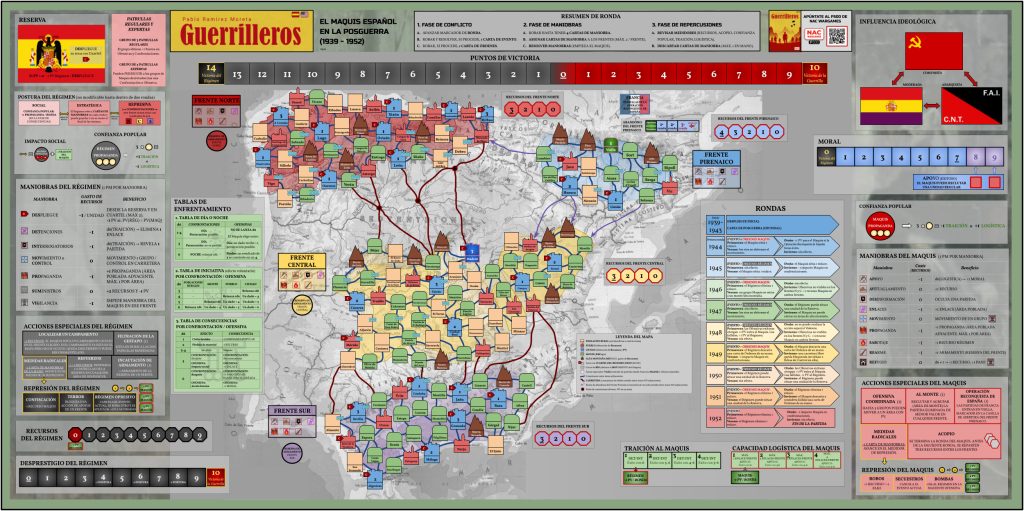
Tablero de testeo de Guerrilleros (a fecha de Junio de 2024). Diseño no definitivo.
UNIDADES: bloques de 1 ó 2 pasos y un solo factor denominado ‘Fuerza‘ (ataque/defensa); niebla de guerra mediante ocultación de unidades y bloques tipo dummy (‘Rumores‘). El apilamiento es de 2 bloques por área para el maquis y de 3 bloques por área para el régimen.
DENSIDAD DE UNIDADES: baja/media. El número de bloques no es definitivo pero la estimación es que terminen siendo en torno a 20 bloques para el bando guerrillero, y en torno a 30 para el régimen (+/-5 bloques en ambos casos). Como suelen estar distribuidos por todo el mapa, puede haber hasta 8-10 bloques de la guerrilla por frente en su momento álgido (inevitablemente van menguando) y en torno a unos 10 bloques del régimen por frente en casi cualquier momento de la partida.
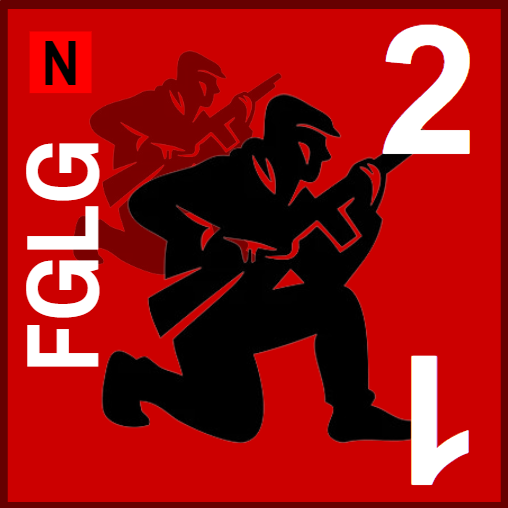
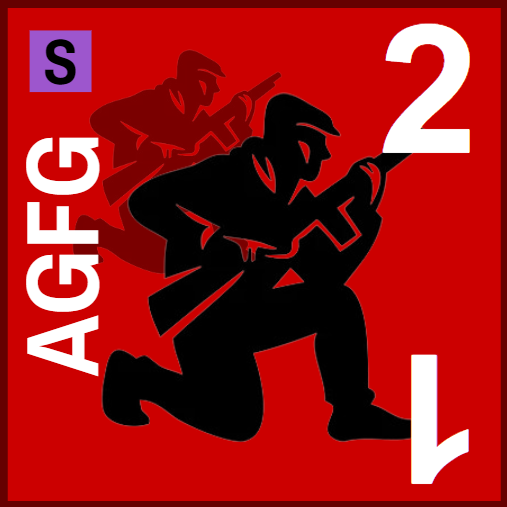
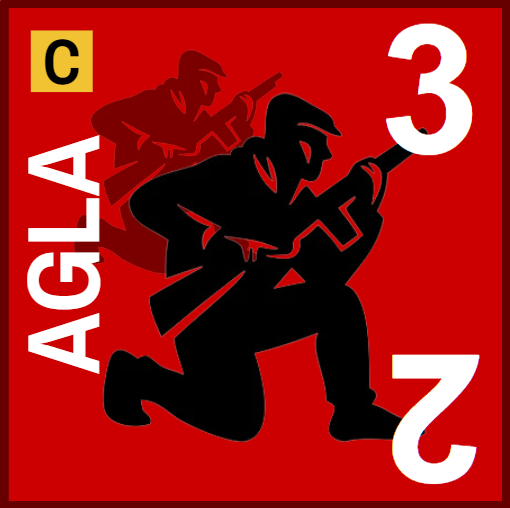

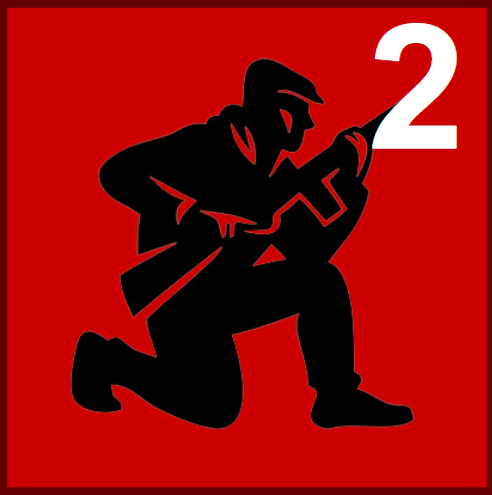
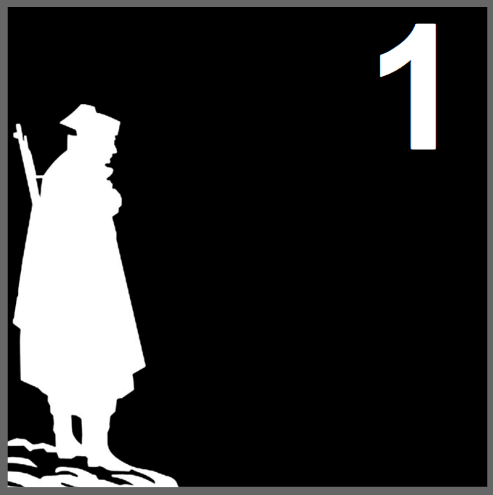
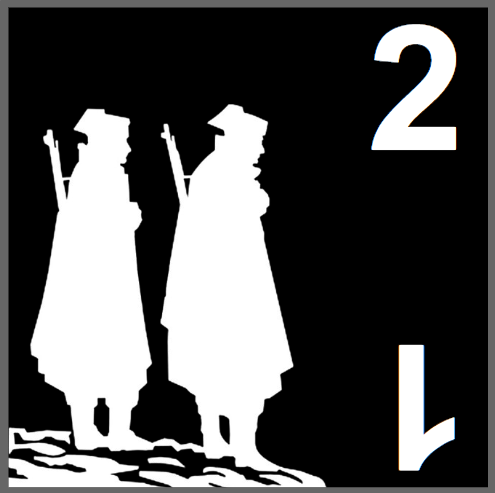
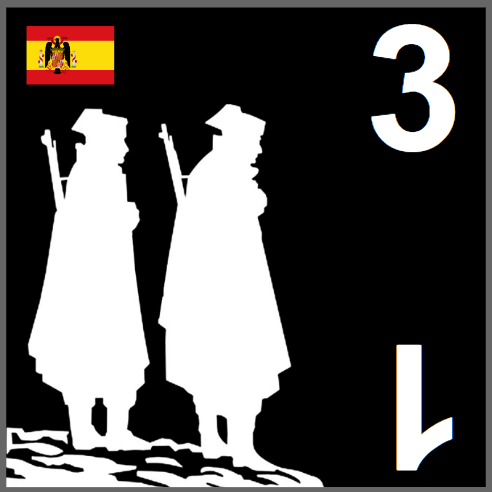
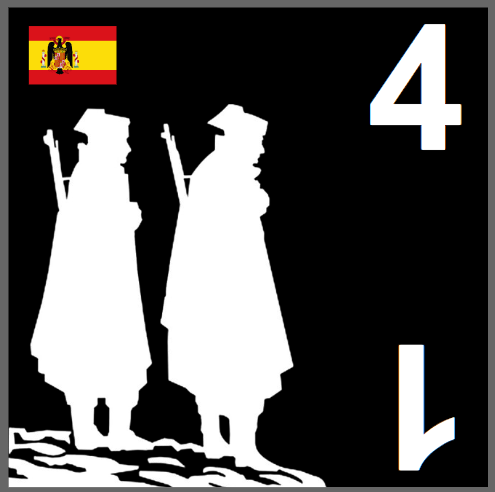
Algunos ejemplos de partidas del maquis (rojo) y patrullas del régimen (negro). Diseños no definitivos.
MECÁNICA PRINCIPAL: motor de cartas (CDG). Cada jugador tiene su mazo propio de cartas de Maniobra. Estas cartas están divididas en dos partes: una, los puntos de operaciones, llamados Puntos de Maniobra (PM) para realizar maniobras diferentes con cada bando, y dos, el evento o efecto de la carta, llamado Maniobra Especial.

Diseño no definitivo.
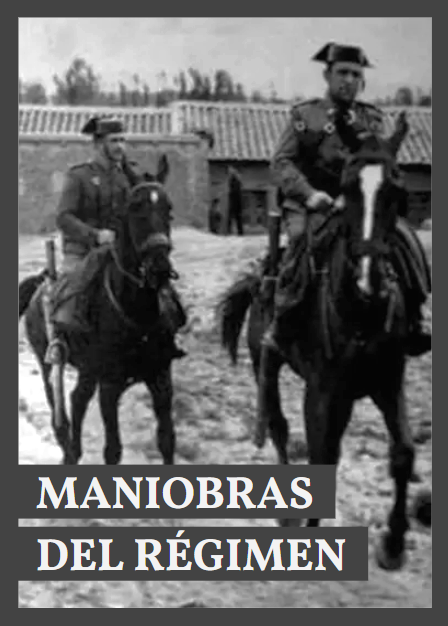
Diseño no definitivo.
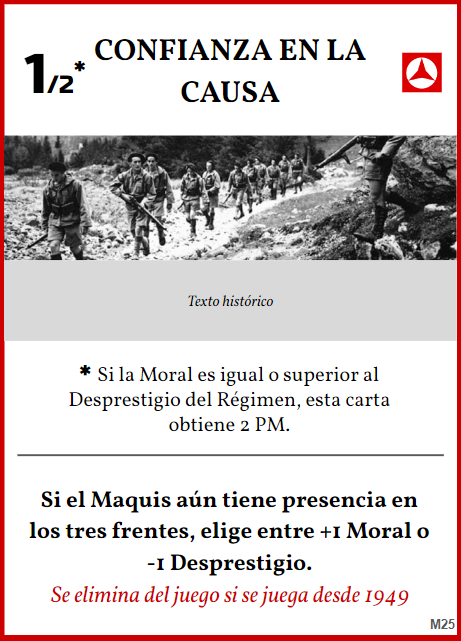
Diseño no definitivo.
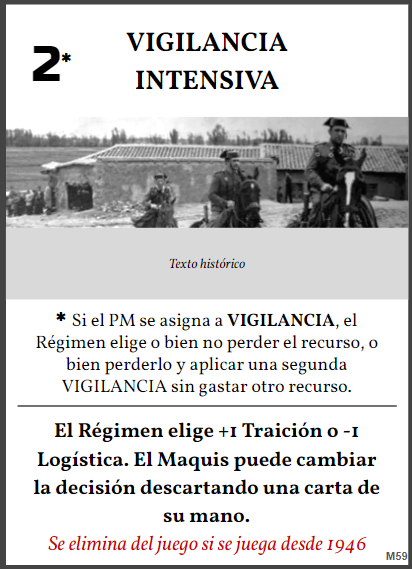
Diseño no definitivo.
MECÁNICAS SECUNDARIAS: de complejidad menor (o incluso efectos pasivos) pero de impacto directo en la optimización de las operaciones y objetivos de cada bando a la vez que aportan matices y trasfondo histórico. Algunas de ellas:
- unidades limitadas para el maquis e ilimitadas para el régimen,
- recursos asimétricos, vinculados a las maniobras,
- moral e influencia ideológica del maquis,
- postura política y desprestigio del régimen,
- capacidad logística y traición al maquis,
- medidas radicales de cada bando,
- propaganda y confianza popular de cada bando,
- armamento, enlaces y campamentos principales del maquis,
- controles y bloqueo de carreteras del régimen,
- directrices históricas del régimen,
- guerrilleros con renombre,
- objetivos militares,
- puntos de victoria,
- … y más.
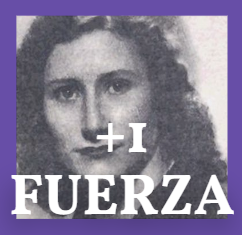

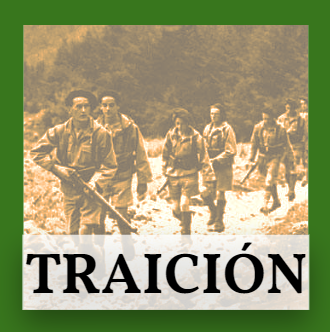
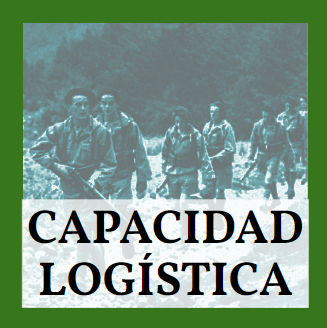
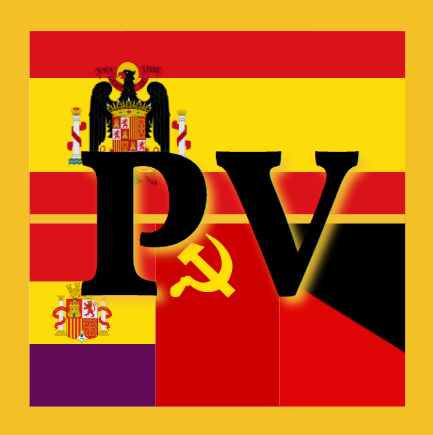
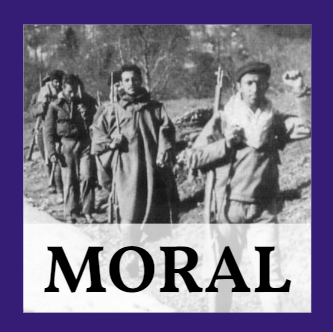
Ejemplos de algunas fichas. Diseños no definitivos.
ENFRENTAMIENTOS: se dan entre grupos de bloques enemigos. Hay dos tipos de enfrentamiento:
- Confrontaciones, iniciadas por cualquier bando, se dan sólo si el régimen consigue encontrar las partidas maquis en un área.
- Ofensivas, iniciadas sólo por el maquis, son ataques realizados contra objetivos seleccionados (ciudades, generalmente).
SISTEMA DE COMBATE: impactos, daños y defensas derivados del lanzamiento de un número de d6 definido por la Fuerza total participante de cada bando. El sistema de combate está sujeto a un constante ajuste fino para, por un lado, conseguir un buen equilibrio sean cuales sean las fuerzas participantes y, por otro, ofrecer resultados realistas y proporcionados a la asimetría de ambos bandos, sin perjudicar la experiencia de ninguno de ellos. Se basa en los siguientes elementos:
- Lanzamiento de Nd6, donde N es la Fuerza total de los bloques participantes de cada bando.
- Cálculo de impactos, daños, prevención de daños y bando vencedor del enfrentamiento.
- Modificadores proporcionados por efectos de cartas o las Tablas de Enfrentamiento: día o noche, persecución, potenciales ventajas (voluntarias) a quien lleve la iniciativa, y consecuencias o efectos colaterales de los enfrentamientos.

DESARROLLO DEL JUEGO: el juego se divide en rondas. La Ronda de Posguerra o ronda cero es opcional y diferente al resto. La primera ronda (primera mitad de 1944) es la ronda inicial de juego regular y, tanto ella como las siguientes hasta el final del juego, constan cada una de 3 fases.
DESARROLLO DE LAS RONDAS: dependiendo de la ronda, su desarrollo es de la siguiente forma:
- RONDA DE POSGUERRA o RONDA CERO: opcional, abarca el periodo desde 1939 a 1943, ambos incluidos. Es una ronda especial que permite a los jugadores variar el despliegue de sus unidades de forma más histórica a través de las ‘Cartas de Posguerra‘. Si se opta por no jugar la ronda de posguerra, puede hacerse un despliegue estándar sin perjuicio de la experiencia de juego.
- PRIMERA RONDA Y SIGUIENTES: constituyen las rondas canónicas del juego, cubriendo desde 1944 hasta 1952, ambos incluidos. Cada ronda abarca dos estaciones de cada año, es decir, un año tendrá dos rondas, una primera ronda de ‘Primavera y Verano‘ y otra de ‘Otoño e Invierno’. En cada ronda, se realizan 3 fases en este orden:
1. FASE DE CONFLICTO
2. FASE DE MANIOBRAS
3. FASE DE REPERCUSIONES
Una breve descripción de las fases es la siguiente:
- FASE DE CONFLICTO: se avanza el marcador de Ronda y, si procede, se revela y resuelve un Evento (aplicando posibles efectos de las estaciones cuando corresponda) y se roban cartas de Órdenes.
- FASE DE MANIOBRAS: cada bando roba hasta tener 4 cartas de Maniobra; comenzando por el maquis, cada bando asigna cartas a los frentes o guarda hasta 2 de ellas en mano. Después, comenzando de nuevo por el maquis, se resuelven todas las cartas asignadas a los frentes, ya sea por Puntos de Maniobra (PM) o por la Maniobra especial del texto de la carta, y voluntariamente las guardadas en mano.
- FASE DE REPERCUSIONES: se revisan los medidores y posibles efectos de los mismos (PV, eliminación de fichas, etc.) y se descartan las cartas aún en mano guardando una como máximo. Después, comienza una nueva ronda.
En futuras entradas desarrollaré algunos de los elementos más relevantes de los descritos en esta ficha. El mapa, mecánica principal, trasfondo de las maniobras…
Sin embargo, si tú, amable lector, quisieras que decribiera alguno de ellos en mayor detalle, puedes dejar un comentario en esta entrada y desarrollaré encantado cualquier aspecto que interese. Con o sin comentarios, ¡gracias por tu interés!
Y recuerda que puedes apuntarte al P500 de forma gratuita y sin compromiso AQUÍ mismo, dándole al botón que verás en la web del P500 dedicada a Guerrilleros.

English version
Apart from some testing at conventions and the description of the game on the P500 page, I admit that, to date, I haven’t shown much ‘Guerrilleros’ material. Overviews, a few cards and little else. This is because until now, I didn’t have a graphical base with which I felt comfortable showing it on the net without the possibility of explaining much about it.
Well, it is time to change that.
Brief (or not that brief) factsheet of
Guerrilleros, the Spanish Maquis in the post-war period (1939-1952)
NOTE: the following factsheet describes the main body of what ‘Guerrilleros’ is and will eventually be. However, because the game is still in development and none of its elements are 100% closed, it is possible that some of the data and numbers provided below may change slightly as development proceeds and mechanics are distilled.
SCALE: strategic.
NUMBER OF PLAYERS: 2, in competitive mode. Solo mode in development (but not guaranteed).
DURATION: 120 – 180 minutes.
OBJECTIVES: asymmetric for each side. The regime wins the instant it manages to eradicate all guerrilla members (guerrilleros) from two of the three main fronts (see MAP below) or reduce the guerrilla Morale to 0. The maquis wins the instant it succeeds in raising the regime’s Discredit to the maximum. If neither of these conditions is met at the end of the last round, Victory Points (VP) are checked and whoever side has the most is declared the winner.
MAP: Iberian Peninsula, point to point type where each point is an area. The map is divided into four ‘Fronts’: three main ones (North, Central and South) and one temporary one (Pyrenean). These fronts are large regions each grouping together different actual pockets of maquis activity. While they do not have a historical background or entity, they have been conceived with a practical purpose to support gameplay.
MAP SCALE: areas between ~10-50 km in extent.

UNITS: 1 or 2-step blocks and a single factor called ‘Strength‘ (attack/defence); fog of war through unit concealment and dummy blocks (‘Rumours‘). Stacking is 2 blocks per area for the maquis and 3 blocks per area for the regime.
UNIT DENSITY: low/medium. The number of blocks is not final yet but the estimate is to end up with around 20 blocks for the maquis side, and around 30 for the regime (+/- 5 blocks in both cases). As they tend to be distributed all over the map, there can be up to 8-10 guerrilleros blocks per front at their peak (they inevitably dwindle) and around 10 regime blocks per front at almost any time during the game.









Some maquis ‘partidas’ (red) and regime patrols (black) blocks. Not final design.
MAIN MECHANICS: Card Driven Engine (CDG). Each player has their own deck of Manoeuvre cards. These cards are divided into two parts: one, the operations points, called Manoeuvre Points (MP) to perform different manoeuvres with each side, and two, the card’s event or effect, called a Special Manoeuvre.

Not final design.

Not final design.


SECONDARY MECHANICS: of lesser complexity (or even passive effects) but of direct impact on optimising the operations and objectives of each side while providing nuances and historical background. Some of them:
- limited units for the maquis and unlimited units for the regime,
- asymmetrical resources, linked to manoeuvres,
- morale and ideological influence of the maquis,
- political posture and discrediting of the regime,
- logistical capacity and betrayal of the maquis,
- radical measures of each side,
- propaganda and popular confidence of each side,
- armament, links and main camps of the maquis,
- road checkpoints and roadblocks of the regime,
- historical directives of the regime,
- renowned guerrilla fighters, ‘guerrilleros’,
- military objectives,
- victory points,
- … and more.






Sample counters. Not final design.
ENGAGEMENTS: they take place between groups of enemy blocs. There are two types of engagement:
- Confrontations, initiated by either side, occur only if the regime manages to find the maquis parties in an area.
- Offensives, initiated only by the Maquis, they are attacks carried out against selected targets (cities, generally).
COMBAT SYSTEM: hits, damage and defences derived from rolling a number of d6 defined by the total participating Strength of each side. The combat system is subject to constant fine-tuning in order, on the one hand, to achieve a good balance whatever the participating forces and, on the other hand, to offer realistic results proportionate to the asymmetry of both sides, without harming the experience of either one. It is based on the following elements:
- Nd6 roll, where N is the total Strength of the participating blocks of each side.
- Calculation of hits, damage, damage prevention, and winning side of the engagement.
- Modifiers (dice roll modifiers, DRM) provided by card effects or the Engagement Tables: day or night, pursuit, potential (voluntary) advantages to whoever has the initiative, and consequences or side effects of the engagement.

GAME STRUCTURE: the game is divided into rounds. The Post-War Round or Round Zero is optional and different from the rest. The first round (first half of 1944) is the initial round of regular play, and it and the following rounds until the end of the game each consist of 3 phases.
ROUNDS STRUCTURE: depending on the round, the development is as follows:
- ROUND ZERO: optional, covering the period from 1939 to 1943, both included. This is a special round that allows players to vary the deployment of their units in a more historical way through the ‘Post War Cards’. If you choose not to play the post-war round, a standard deployment can be made without detriment to the game experience.
- INITIAL AND FOLLOWING ROUNDS: these are the canonical rounds of the game, covering 1944 to 1952, both included. Each round covers two seasons of each year, i.e. a year will have two rounds, a first round of ‘Spring and Summer’ and another of ‘Autumn and Winter’. In each round, 3 phases are conducted in this order:
1. CONFLICT PHASE
2. MANOEUVRE PHASE
3. AFTERMATH PHASE
A brief description of the phases is as follows:
- CONFLICT PHASE: the Round marker is advanced and, if applicable, an Event is revealed and resolved (applying possible station effects where applicable) and Orders cards are drawn.
- MANOEUVRE PHASE: each side draws up to 4 Manoeuvre cards; starting with the Maquis, each side assigns cards to fronts or keeps up to 2 of them in hand. Then, starting with the maquis again, resolve all cards assigned to the fronts, either by Manoeuvre Points (MP) or by the Special Manoeuvre of the card text, and voluntarily keep those in hand.
- AFTERMATH PHASE: review the tracks and their possible effects (VPs, removal of counters, etc.) and discard the cards held in hand, keeping a maximum of one card. After that, a new round begins.
In future posts I will develop some of the most relevant elements described in this sheet. The map, the main mechanics, the background of the manoeuvres…
However, if you, kind reader, would like me to describe any of them in more detail, feel free to leave a comment on this post and I will be happy to elaborate on any aspect of the game. With or without comments, thank you for your interest!
And remember that you can sign up for the P500 for free and without obligation right HERE, by clicking on the button you will see on the P500 Guerrilleros website. Remember that this game will be FULLY published in Spanish AND English, all within the same single box!


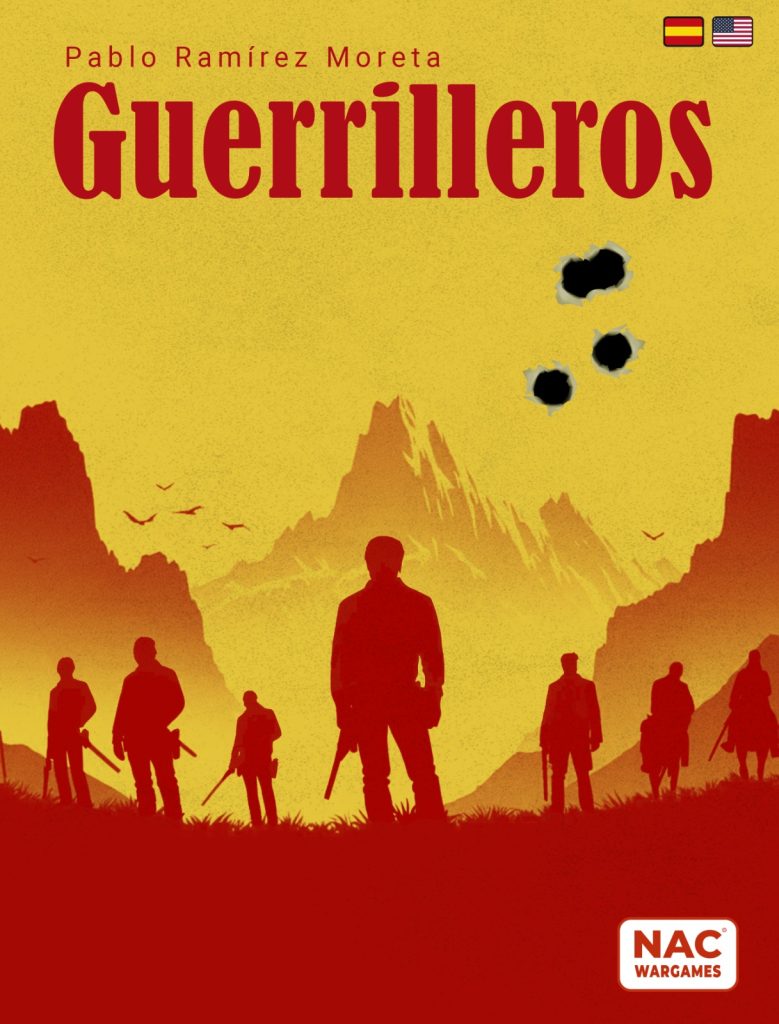


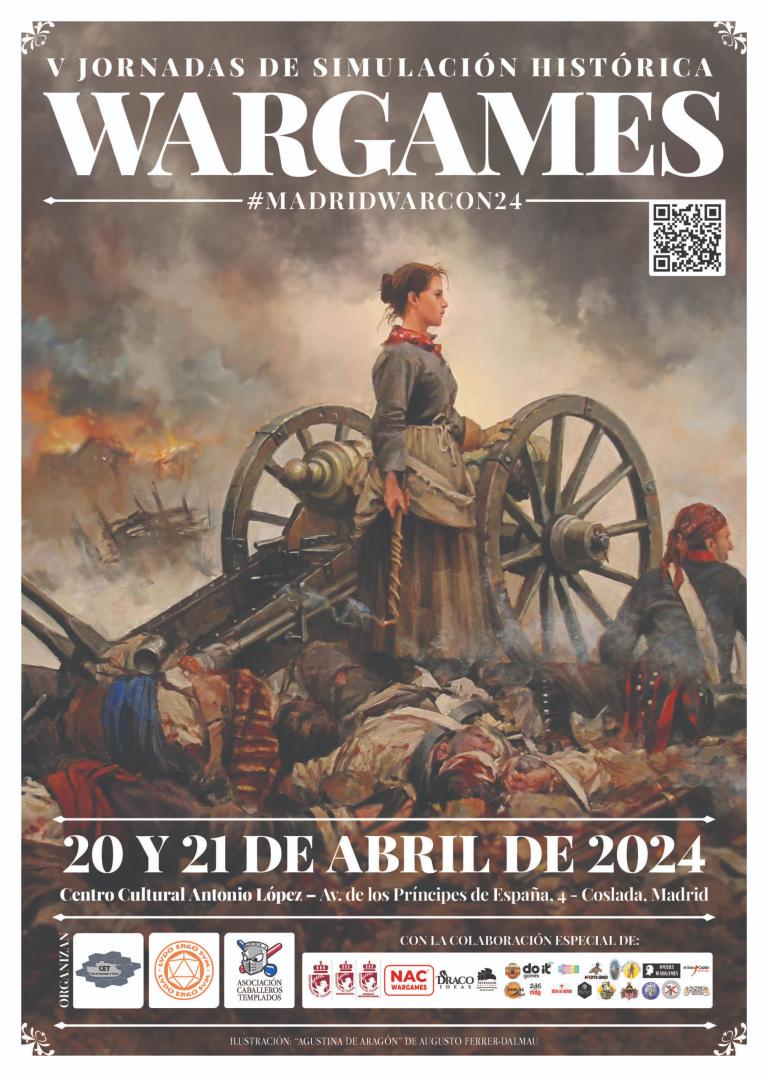
Una duda, ¿la idea es que los jugadores se sienten enfrentados, es decir, uno al norte y otro al sur, como por ejemplo en el Cruzada y revolución? En tal caso, sugiero que los nombres de las ubicaciones y cosas comunes miren al este o al oeste, que si no es un poco rollo que el que está al norte lo tenga todo ah revés. Ánimo con el desarrollo, ¡el juego tiene pintaza!
Ricardo, muchas gracias por tu pregunta, comentarios y palabras!
Das totalmente en el clavo.
El tablero final, cuando sea que esté listo, favorecerá la legibilidad de todo para ambos jugadores y los enfrentará en extremos opuestos. En principio uno al Este y otro al Oeste del mapa – aunque no descarto la orientación Norte-Sur tampoco.
Déjame que desarrolle dos puntos al respecto.
Primero, quiero insistir en que el tablero que muestro arriba es casero y NO es definitivo, ni mucho menos.
Segundo, tu pregunta me ayuda a explicar por qué ahora tiene una orientación única hacia el Sur: este tablero está fundamentalmente diseñado con dos propósitos en mente. Por un lado, favorecer mi trabajo en el juego, y por otro, para el testeo en Vassal, donde los jugadores pueden compartir el mismo «asiento» en la mesa. Para testeos presenciales (y por descontado en el tablero final) se usará un tablero donde todo lo importante esté orientado favoreciendo la legibilidad y comodidad de ambos jugadores en sus posiciones frente al juego.
Por tanto, sugiero que consideremos este tablero como una declaración de intenciones pero que será pulida hasta el extremo para favorecer la experiencia de juego lo máximo posible.
Añado: en unas semanas, colgaré una entrada completamente dedicada a comentar cosas del tablero: áreas, «frentes», tablas, etc. Espero que ahí quede todo más claro, incluido el tema por el que has preguntado. Muchas gracias de nuevo!